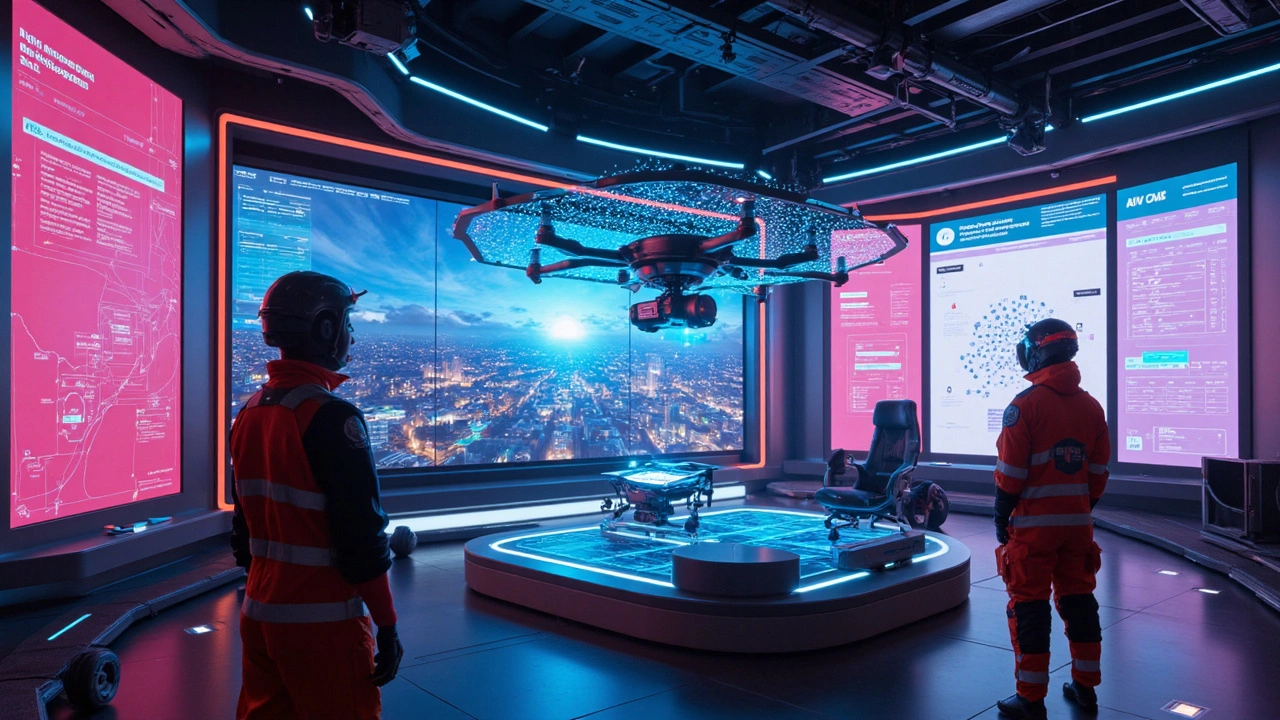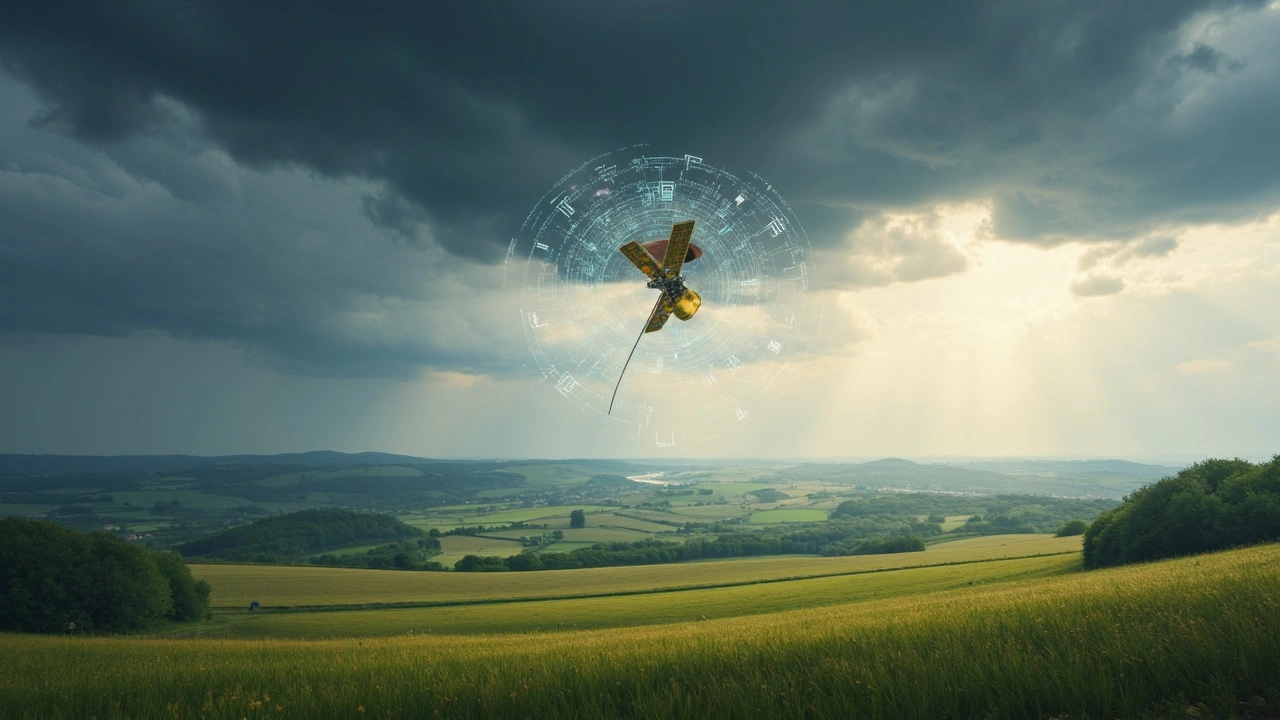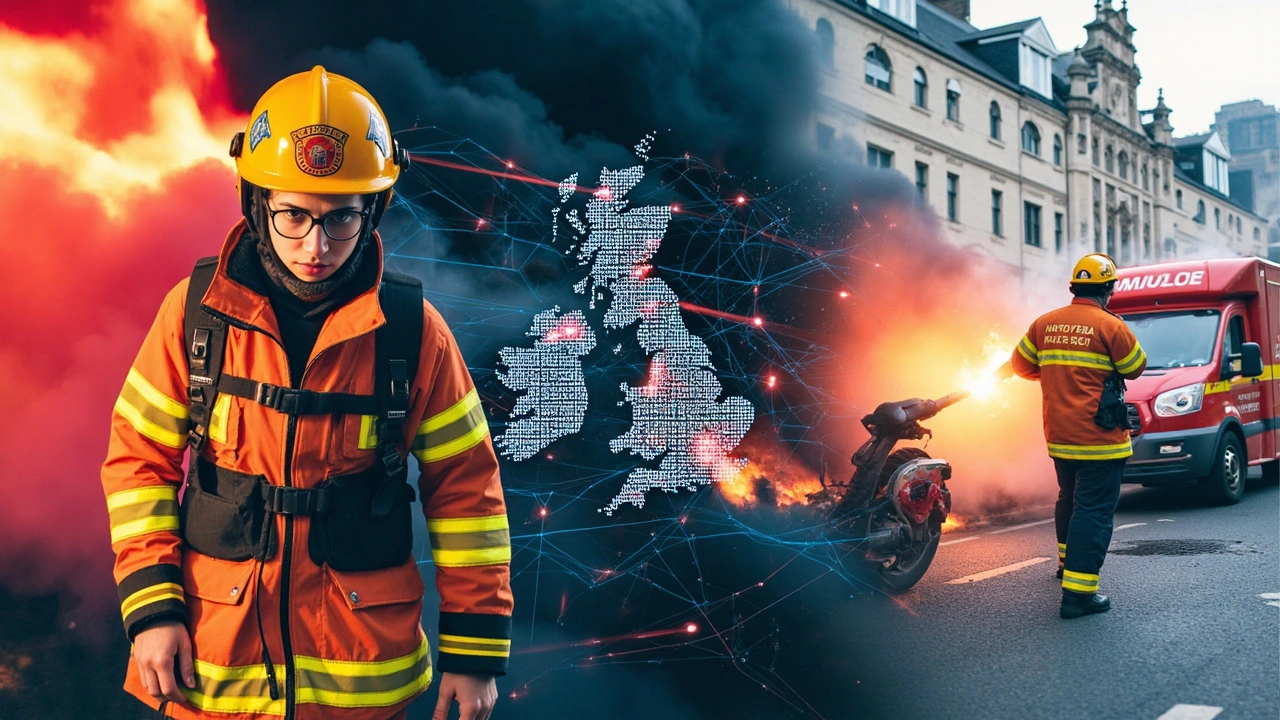The Role of AI in Disaster Management

When disaster strikes, every second counts. Imagine having a system that not just predicts but efficiently coordinates a response to natural calamities. That's where AI steps in, turning the tables on how we handle such events. Traditionally, predicting earthquakes or hurricanes relied heavily on historical data and meteorologist prowess. Now, AI algorithms can analyze vast datasets in real-time, spotting patterns that humans might miss. This isn't just what-ifs—it's happening right now.
Remember when hurricanes seemed to come out of nowhere? Today, using machine learning, we can track these swirling giants with unprecedented accuracy. By doing so, we give communities the heads up they need to evacuate safely.
- AI in Predicting Disasters
- Real-Time Data Analysis
- Enhancing Communication
- Efficient Resource Management
- Integrating AI into Current Systems
AI in Predicting Disasters
Disasters can bring life to a standstill, but what if we could anticipate them more accurately? That's where AI steps in, bringing its predictive prowess to disaster management. AI isn't just a fancy gadget; it's a tool that's changing how we foresee storms, quakes, and other natural events.
Understanding the Patterns
Tackling predictions means getting cozy with data. AI algorithms sift through endless records—from weather reports to seismic activities—identifying potential threats. Traditional methods may falter when data piles up, but machine learning thrives in this environment, learning from every byte of info.
Practical Applications
Take hurricanes, for example. With AI, we can detect formation patterns earlier and predict their paths with improved accuracy. During the 2023 hurricane season, early AI predictions helped authorities in coastal areas to alert and evacuate residents, saving lives.
| Year | Predicted Hurricanes | Actual Hurricanes |
|---|---|---|
| 2021 | 9 | 8 |
| 2022 | 11 | 10 |
| 2023 | 13 | 12 |
AI In Action
Predictive models powered by AI have been game-changers. For instance, in earthquake-prone areas, networks of sensors connected to AI systems can analyze ground vibrations, giving crucial seconds of warning before a quake hits. This tech has seen action in Japan and California, reducing damage and casualties.
AI's impact extends to volcanic eruptions too. By analyzing gases and seismic activity, AI provides predictions that were once impossible, giving communities precious time to prepare or evacuate.
The Road Ahead
The future? AI will only get smarter. With ongoing machine learning advancements, we're on the brink of even earlier and more accurate disaster predictions. Imagine a world where AI warnings save thousands, minimizing destruction and giving humans a fighting chance against nature’s fury.
Real-Time Data Analysis
Ever thought about how real-time data analysis is revolutionizing disaster management? Picture this: an app that immediately alerts you about an incoming storm, offering evacuation routes instantly. It's a game changer. Thanks to AI, we can now process massive amounts of data from satellites, sensors, and social media as events unfold. This isn't just tech talk; it's about improving how quickly and how effectively we respond during emergencies.
One fascinating example is how AI aids in flood management. By analyzing rainfall patterns, soil moisture, and river data, AI systems predict flooding in vulnerable areas with impressive accuracy. This gives local authorities the crucial time they need to prepare or evacuate communities, reducing potential damage and saving lives.
The Role of Machine Learning
Incorporating machine learning, real-time data analysis detects unusual patterns indicating potential risks. For instance, when monitoring seismic activities, AI systems can catch precursor signals of earthquakes, offering invaluable extra minutes for residents to find safety.
Challenges and Solutions
But where there are pros, there are cons. Real-time data analysis requires constant access to high-quality data and robust algorithms. Interruptions or quality issues could mislead responses, but developers are continuously working on refining these systems to minimize errors.
| Data Type | Application |
|---|---|
| Social Media | Identifying patterns of emergency through public posts |
| Satellite Imagery | Tracking movement of storms and wildfires |
The goal isn't just to forecast disasters but to create an interconnected system that helps emergency personnel act faster and smarter. It makes every bit of info count, turning scatter into synchronicity.

Enhancing Communication
When it comes to disaster management, effective communication is undeniably key. In the chaos of a natural disaster, confusion can reign supreme, often leading to serious lapses in coordination and response. Here is where AI steps up, breaking down barriers and connecting first responders, government agencies, and the public like never before.
One impressive example of AI-enhanced communication is its role in parsing through social media. Platforms like Twitter and Facebook can become rapid sources of real-time information during emergencies. AI tools can crawl through thousands of posts, picking out critical information that doesn't just inform but saves lives. In a study conducted by the Harvard Humanitarian Initiative, it was reported that AI-driven analysis identifies actionable content 50% faster than traditional methods.
Smarter Alert Systems
Traditionally, broadcasters and official channels were solely responsible for disseminating alerts. Now, thanks to AI, we have personalized alert systems. These systems tailor notifications based on a user’s location and behavior, which means if a flood warning is relevant to you, AI ensures you hear about it immediately, rather than getting lost in the noise.
"AI is revolutionizing the way we communicate during crises by ensuring accurate information reaches the correct people at the right time," said Dr. Emily Ford of the World Disaster Response Institute.
Such systems are becoming more sophisticated, automatically translating alerts into different languages and sending them out in formats accessible to all, including the visually and hearing impaired.
Bridging Gaps in Communication Networks
AI also plays a crucial role in maintaining communication when traditional networks fail. Have you seen those mobile towers in disaster movies that go down? AI-driven drones can temporarily restore connection by acting as mobile relay stations. This ensures that even in the face of infrastructural damage, essential communication lines stay open.
- Improved social media analysis for real-time intelligence
- AI-driven personalized alert systems
- Seamless and inclusive communication across language and accessibility barriers
- Drones used as interim communication towers
By harnessing the power of AI, we can not only ensure faster and broader information dissemination but also bolster our defenses against the chaos that disasters often unleashes.
Efficient Resource Management
Imagine a world where AI is the backbone of disaster resource allocation, ensuring supplies go where they're needed most—and fast. That's not a sci-fi dream; it's a reality we're inching towards. In times of crisis, whether it's a hurricane or an earthquake, having the right resources in the right place can mean the difference between life and death.
Knowing where resources should be allocated is all about data, and AI loves data. With machine learning algorithms, agencies can analyze data like population density and infrastructure damage to prioritize delivery routes and resource distribution effectively.
Adaptive Allocation Strategies
One standout feature of AI in disaster management is its ability to adapt on-the-fly. If a particular area suddenly shows an unexpected level of need, AI systems can automatically reroute resources. This flexibility ensures no location is left in the lurch. Plus, it helps reduce waste. Supplies that aren’t urgently needed in one area can quickly be redirected where they're in high demand.
Case Studies and Examples
Take the example of the 2023 floods in Indonesia. AI-driven systems helped reduce the response time for rescue operations by 30%, prioritizing areas with significant distress. These systems used satellite imagery to assess road viability and directed convoys away from blocked paths without human intervention.
Data-Driven Decisions
Using real-time data, AI not only makes predictions but also informs decision-makers on how to adjust strategies. A logistics manager can check a dashboard and see how resources are being used in real-time. If one shelter's supplies are running low, they can instantly authorize a resupply mission, preventing shortages.
| Resource Type | Optimal Allocation | Impact of AI |
|---|---|---|
| Food Supplies | High-density urban areas | 30% faster allocation |
| Medical Kits | Severely hit regions | 20% reduction in distribution time |
The future of emergency response truly lies in the hands of AI, turning data into lifesaving actions. So next time disaster knocks, rest assured that machine learning is working behind the scenes, streamlining how we manage our precious resources.

Integrating AI into Current Systems
Bringing AI into disaster management isn't just about having fancy tech. It's about making sure all this tech actually clicks with the systems already in place. We have top-notch data analysis and prediction tools, but bridging the old and the new requires some thinking.
First off, let's talk about why many systems struggle. A lot of them don't communicate well with each other, which is where AI can save the day. With the right protocols, AI can act as a translator of sorts, ensuring different platforms work smoothly together. Imagine emergency services, weather databases, and even traffic systems all chatting away effortlessly. That's the goal!
Adapting Existing Infrastructure
We can't toss out the old systems—they've got history and infrastructure that's tried and true. So, the trick is adapting them. Use AI to handle heavy data lifting and offer predictive analytics while letting legacy systems function in their operational roles. Investing in AI doesn't mean a complete overhaul but rather a smart upgrade.
- Analyze current workflow and identify bottlenecks.
- Install AI-driven interfaces to connect separated systems.
- Develop training programs for staff to use AI tools effectively.
Real-World Applications
There have already been successful uses. Local governments are pairing AI with drone technology for rapid assessment and resource allocation in disaster zones. This combination provides real-time imagery and data analysis, ensuring help gets where it's needed, fast.
Dealing with Challenges
Integration isn't without its hiccups. Budget constraints and resistance to tech adoption can slow things down. Yet, proving AI's value in predictive accuracy and enhanced communication should ease these concerns. Demonstrating faster response times and lower casualty rates may just tip the scale.
The key takeaway is this: integrating AI into current systems should feel like adding a solid brick to a sturdy wall—it supports and enhances without uprooting the whole structure. It’s about synergy, not replacement.